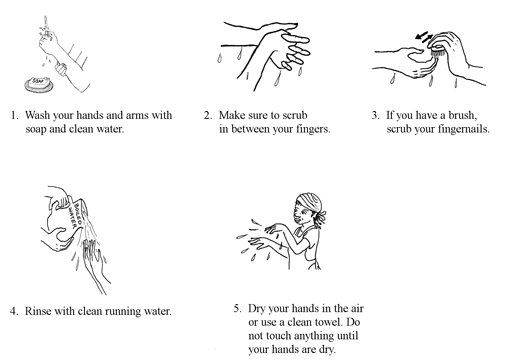2.2.2 Water-washed diseases
Water-washed diseases are those that occur as a result of inadequate quantities of water being available for good personal hygiene. Good personal hygiene habits include:
- washing hands with soap, or using an alternative such as ash, after using the latrine
- washing hands before preparing and/or eating food
- washing the body frequently
- cleaning the teeth at least once a day
- washing the hair with soap or shampoo at least once a week.
Figure 2.1 shows the steps in a thorough technique for handwashing.
Water-washed diseases are sometimes called ‘water-scarce’ diseases because they are a problem if water supply is limited. They include fungal skin diseases such as ringworm, ophthalmic diseases (diseases of the eye) such as trachoma and conjunctivitis, and infections caused or carried by lice, mites, fleas or ticks. Two examples of these diseases are scabies (caused by mites) and louse-borne epidemic typhus (caused by Rickettsia prowazekii bacteria and transmitted largely by body lice).
Adequate quantities of clean water can prevent such diseases affecting a population. Why do you think this is so?
Because if plenty of water is available, people are able to wash frequently and the disease-causing organisms will be washed away.
2.2.1 Waterborne diseases

